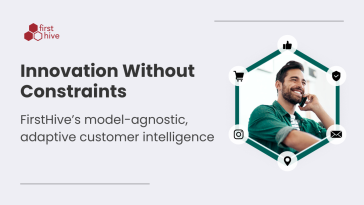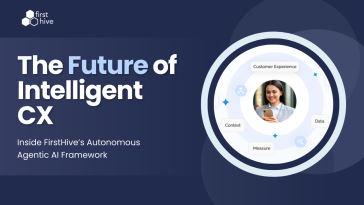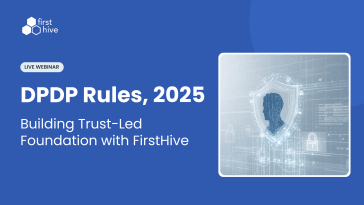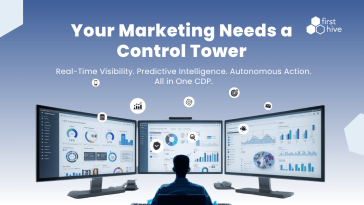First-party data is a valuable asset for marketers, providing valuable insights into consumer behavior and preferences. In this blog post, we will explore the definition of first-party data and its benefits for marketing strategies.
Types of Customer Data and How to Make the Most of Them
Before diving into first-party data, let’s briefly discuss the different types of customer data available to marketers. These include first-party data, second-party data, third-party data, and zero-party data.
First-Party Data
First-party data is the information collected directly from your customers or website visitors. It includes data such as demographics, purchase history, browsing behavior, and engagement metrics. This data is considered highly valuable as it provides insights into your own customer base.
Second-Party Data
Second-party data refers to data that is shared between two businesses or organizations. It can be acquired through partnerships or collaborations with other companies in your industry. This type of data can provide additional insights and expand your target audience.
Third-Party Data
Third-party data is data collected by external sources, such as data brokers or aggregators. It includes data from various online and offline sources, such as social media platforms, public records, and surveys. Third-party data can be useful for reaching a broader audience and targeting specific demographics.
Zero-Party Data – Valuable Insight into Customers’ Preferences
Zero-party data is data that is willingly shared by customers or website visitors. It includes information such as preferences, interests, and purchase intentions. Zero-party data is valuable as it provides direct insights into customers’ preferences and helps personalize marketing campaigns.
Which Type of Customer Data is the Better Choice?
When it comes to choosing the right type of customer data for your marketing efforts, first-party data is often considered the best choice. It offers several advantages:
- Accuracy and reliability: First-party data comes directly from your own customers, ensuring its accuracy and reliability.
- Relevance: First-party data provides insights into your specific customer base, allowing for personalized marketing campaigns.
- Compliance with privacy regulations: Collecting and using first-party data ensures compliance with privacy regulations, such as GDPR and CCPA.
How to Use First-Party Data to Improve Your Marketing Strategy
Now that we understand the definition and benefits of first-party data, let’s explore how to effectively collect and use it to improve your marketing strategy.
Personalized Marketing
First-party data allows you to personalize your marketing campaigns based on individual customer preferences, behaviors, and purchase history. By tailoring your messages and offers to specific segments of your audience, you can increase engagement and conversion rates.
Segmentation and Targeting
Segmentation and targeting are essential in marketing. With first-party data, you can divide your audience into specific segments based on demographics, interests, or behaviors. This allows you to tailor your marketing efforts to each segment, delivering more relevant messages and offers.
Customer Retention
First-party data can help you identify customers who are at risk of churning or leaving your brand. By analyzing their behaviors and engagement metrics, you can implement targeted retention strategies to keep them engaged and loyal.
Cross- and Upselling
First-party data enables you to identify cross-selling and upselling opportunities by analyzing customers’ purchase history and preferences. By recommending relevant products or services, you can increase average order value and customer lifetime value.
Optimizing Ad and Email Marketing Campaigns
With first-party data, you can optimize your ad and email marketing campaigns by targeting specific customer segments, delivering personalized messages, and analyzing performance metrics. This allows you to allocate your marketing budget more effectively and improve campaign ROI.
Product and Service Optimization
First-party data can provide valuable insights into how customers use and interact with your products or services. By analyzing their feedback, behaviors, and preferences, you can make informed decisions regarding product improvements or new feature development.
Improved User Experience
By leveraging first-party data, you can enhance the user experience on your website or mobile app. Personalization based on customers’ preferences and behaviors can lead to increased satisfaction, engagement, and loyalty.
Increase User Acquisition
First-party data can also help you identify lookalike audiences or similar customer profiles to expand your customer base. By targeting these audiences with personalized messages and offers, you can increase user acquisition and brand awareness.
A/B Testing
With first-party data, you can conduct A/B testing to optimize your marketing campaigns. By testing different variations of your messages, offers, or landing pages, you can identify the most effective strategies and improve overall campaign performance.
Data Collection and Privacy – Where Are We Heading?
Data collection and privacy have become important topics in the marketing industry. With the rise of privacy regulations, such as GDPR and CCPA, marketers need to ensure they collect and use customer data in a compliant and transparent manner.
Collecting First-Party Data
Collecting first-party data requires implementing data collection mechanisms on your website or mobile app. This can include using cookies, consent forms, or user registration. It is important to clearly communicate to your customers how their data will be used and obtain their consent.
Using First-Party Data
Using first-party data requires a data management strategy and tools to analyze and segment the data effectively. Customer data platforms (CDPs) can help centralize and manage first-party data, providing insights and actionable information for marketing campaigns.
Taking First-Party Data to the Next Level
While first-party data is already valuable for marketing strategies, there are several ways to take it to the next level:
- Integrating first-party data with other data sources, such as second-party or third-party data, for a more comprehensive view of your audience.
- Using advanced analytics and machine learning to derive deeper insights from your first-party data, enabling predictive modeling and personalized recommendations.
- Exploring emerging technologies, such as artificial intelligence and blockchain, to enhance data security, privacy, and transparency.
In conclusion, first-party data is a powerful asset for marketers, providing valuable insights into customer behavior and preferences. By effectively collecting and using first-party data, marketers can create better marketing strategies while complying with privacy regulations. With the right tools and strategies in place, first-party data can significantly improve marketing performance and drive business growth.








